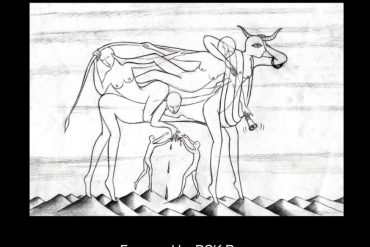New Delhi : Indian art has travelled an energetic course in the last 5,000 years, peaking in aesthetic excellence during the Hindu and Buddhist periods. But this mammoth journey has been sequestered from the Western world for want of comprehensive documentation.
Senior writer and curator Sushma K. Bahl has tried to bring out this journey with a hefty volume, “5,000 years of Indian Art” – a joint initiative by her and Roli Books.
“I visited the International Centre for Visual Arts in London with an artist a few years ago…And the authority and members of the international art world lamented that there were no books on Indian art,” senior writer and curator Sushma K. Bahl said .
“Your books are only picture books without texts, they said. I put together a collection of books and sent them,” she said.
It was released by MP Karan Singh, the president of the Indian Council for Cultural Relations (ICCR), and graced by Indian Ambassador to Bhutan Pavan Varma, a cultural ideologue and writer.
The book, priced at Rs.3,975, covers the evolution of Indian art from the cave paintings of Bimbhetka to the Hindu period, Buddhist art, medieval Muslim art, East India Company art and contemporary art.
“The Gupta period and the Mathura school of Buddhist art have been the best periods in the history of Indian art because of the diversity represented by the Hindu gods, temple paintings, sculptures at temples like Khajuraho. It led to an artistic creativity – which in my view was very important,” the writer said.
The Mathura school of visual art – mostly Buddhist spiritual-scapes – flourished in the trade and pilgrim town of Mathura between the second and 12th century – the most significant contributions being made by the Kushan and Gupta periods.
Evidence suggests Mathura was also a prolific exporter of sandstone and schist (a metamorphic rock) art. The art travelled all over the world.
The volume, which is like a visual exhibition of the history of Indian art in pictures, lists an exclusive selection of Buddhist art from the Mathura and the Gandhara school.
A sculpted stone panel dating to the third century depicts the birth of Siddhartha. The panel at the Museum for Indische Kunst in Germany shows Queen Maya, Gautama’s mother, standing in the Lumbini grove grasping the branches of a tree – holding her sister Mahaprajapati with the other as Siddhartha emerges from her side.
A terracotta sculpture of Krishna battling the horse demon Keshi dating to 440 AD from Uttar Pradesh portrays the young Krishna in his avatar of Vishnu freeing his people of Mathura and Vrindavan. The boy lunges at the horse demon’s stomach and shoves his elbow into his mouth locked in a do-or-die tussle.
An icon of headless Kanishka with his severed head – in a separate inset – gives readers a rare idea of how the Kushan king of Mathura looked.
The section of art in medieval India between 14th and mid-18th century brings the colourful Rajput, Persian, Gujarati, Deccan and Pahadi miniature and Muslim frieze art of the period alive with short notes, bibliography and stunning visuals.
“There are two kinds of pictures in the book – one that people can easily identify with and the other which have been rarely seen,” Bahl said.
A rare portrait of the aging Mughal emperor Akbar in ink and gold on paper from the Cleveland Museum of Art in Ohio in the US shows him standing with a string of rosary beads and with a golden halo around his head.
The face of the portly man – of medium height – appears serene. Farishtas or angels frame the sky in a style reminiscent of the European 14th and 15th century Christian art.
The visuals are from 40 locations across the world, including international archives.
“I have been thinking about the project since the Festival of India in 1982. It was a daunting task but the fact that I visited several of these sites in the course of my projects in the last few years helped me identify the art work I wanted for my book,” Bahl said.
IANS


